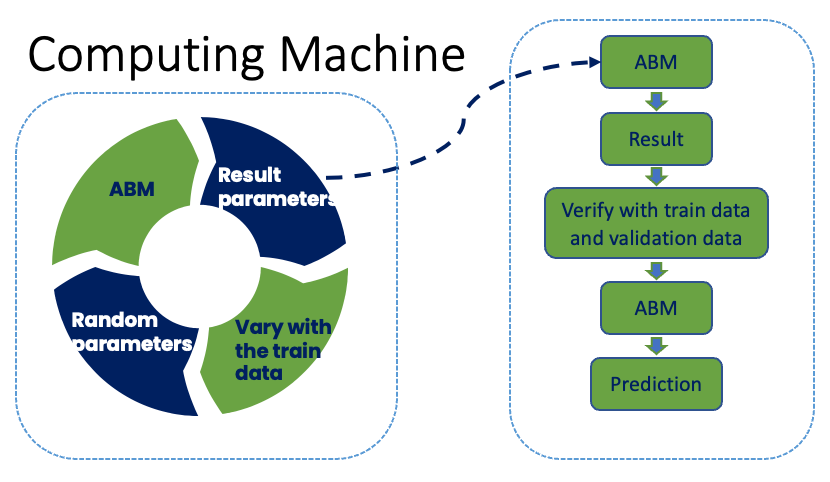Modeling Propagation with Agent-Based Models (ABM) for COVID-19 Diffusion
Introduction
The ongoing COVID-19 pandemic, caused by SARSCoV2, affects every aspect of life, including politics, education, economy, society, environment, and climate. It disrupts global supply chains and production. Social distancing measures are the primary defense against the virus, but their effects are hard to predict due to societal complexity. To understand this better, modeling and simulating the COVID-19 spread using Agent-Based Simulations (ABS) is valuable. ABS simplifies complex systems, providing accurate results and insights into agent behaviors, interactions, and the impact of interventions. This approach is especially useful for simulating the effects of various control measures on agent behaviors in our study.

Methodology
This project has two main steps. First, we train a model using past epidemic data, adjusting various parameters to fit the early stages of the pandemic when data is limited. This step is challenging due to the need for computational resources and finding the right balance between accuracy and speed. We determine parameters like infection probabilities, phase transitions, and initial infected numbers.
The best hyper-parameter we got is [0.30177623145943966, 0.024417043096081066, 0.08680351906158358, 0.2559760712977659, 0.0780734952997192, 0.10695843252151621, 0.04320625610948192, 0.43910389451837384, 40.0, 91.0, 200.0], for which the MSE is 1630.98, which means the daily mortality difference between the simulation and the reality is around 40 on average, and we consider it in a reasonable range and acceptable. And the predicted pandemic data is shown in the figure.
In the second step, we use these parameters to predict future pandemic trends, including daily infections, mortality rates, and the impact of different policies, the results show that it can be a valuable tool for future pandemic predictions.
Results






